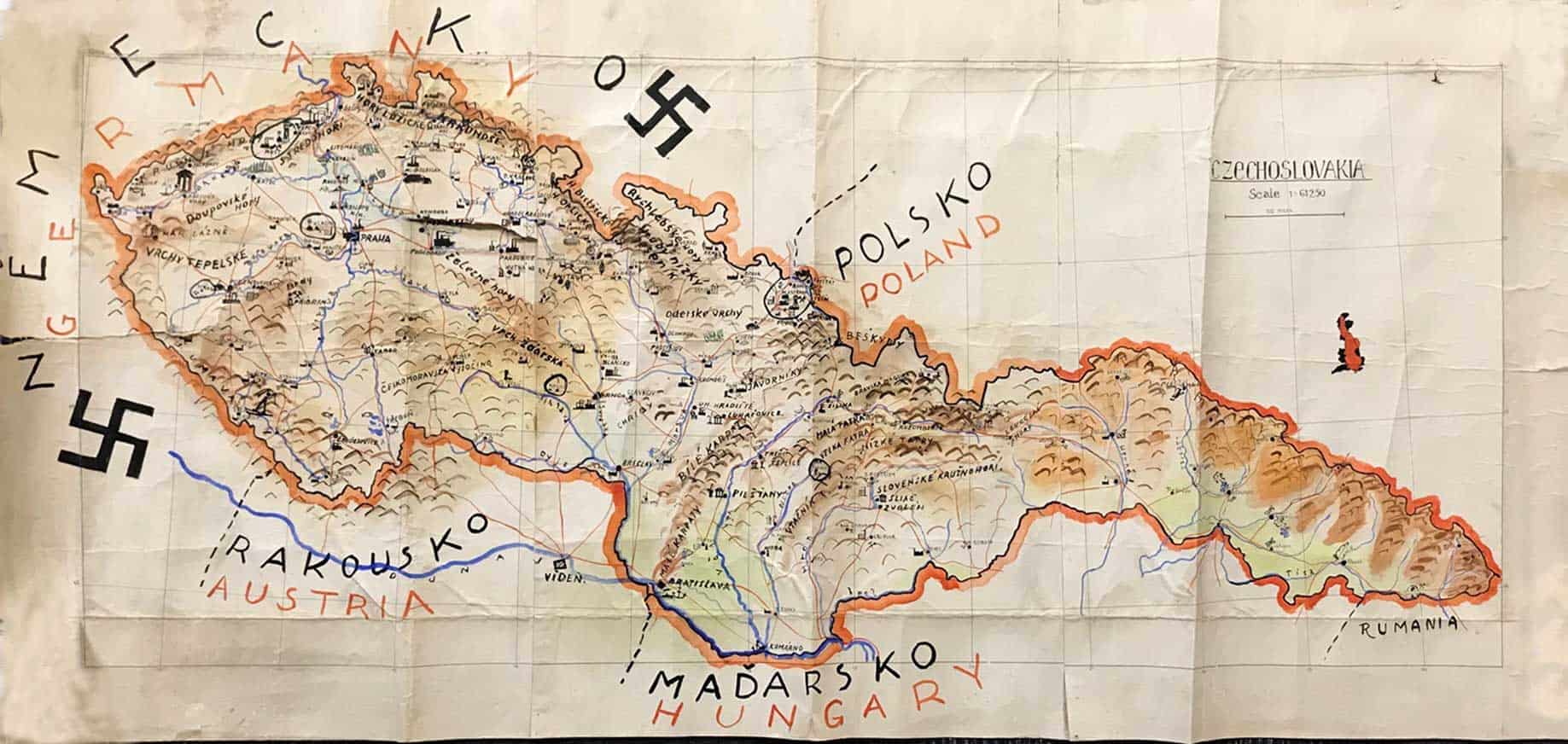A very special part of conservation is being able to learn more about the history and provenance of each piece that comes into the studio. For one map that we recently received, we were privileged to learn more about its fascinating place in history, dating back to the Second World War when the map was used in the Yalta Conference.

The Conference was a meeting of the heads of government of the United Kingdom, the United States and the Soviet Union to discuss the reorganisation of postwar Germany and Europe in February 1945. It was given to our clients by a family friend’s relation, who was an Officer in the WRNS (Women’s Royal Naval Service) and part of the Royal Navy contingent at the conference. Officers from the WRNS were the writers and recorders of the discussions.
Our clients had been in the Navy, and so the map, depicting Czechoslovakia as it was towards the end of the war, was given to them as a souvenir. The map is hand-painted, with certain recognisable features such as factories and landmarks to denote specific areas of Czechoslovakia. Considering the extensive history of the map and the interesting stories it had been privy to, our clients felt that the map deserved comprehensive conservation and we were privileged to be able to assist.
Studio Assessment
On arrival, our conservators made an assessment of its condition. Understandably for its purpose, it is a large map at 63 x 30 inches. Before we received it, our clients informed us that it had been previously folded and was currently rolled up in a tube.

After being gently laid flat, the deep creasing and multiple tears were evident. The tears were particularly prominent along the crease lines where the map has become progressively worn. The map also had some discolouration and would benefit from a clean to remove the accumulation of dirt and contaminants over the years.
Restoration
Before we began, we spoke in detail with our clients about what they would like the map restoration to achieve. Their aim was a common one shared by many of our clients; to stabilise and conserve while keeping the authenticity and age of the map. A pristine piece would be incompatible with its history.

To lift the surface contaminants, dirt and dust, the map was gently cleaned in a suitable solution. This achieved the objective of ensuring full stability and cleanliness without altering the evident natural ageing. The multiple tears were carefully brought back together and repaired. Our conservators suggested relining on Japanese tissue to provide the most comprehensive stability and structural support. Conservation weights were applied to the map to counteract the deep creases running through. This also assisted with aligning the tears in preparation for the tear repairs. This was carefully carried out to ensure that place names, rivers, mountains and landmarks of the map were accurately joined back together.
The result is an authentic and appropriate map restoration, providing the required stability while not compromising its historical significance. Our client was delighted with the map restoration, and sent a kind note to the studio:
“What a fine job you have done. A superb outcome. We couldn’t stop admiring it; the colours and pictures fresh and clear and the whole map looking age perfect. Amazing result.”
It was a fascinating project for our conservators to be involved in, and to enable the preservation of an important piece of history.
If you have a map that needs restoring or work-on-paper and would like our recommendations and a quote, please contact us for free, no-obligation advice.






